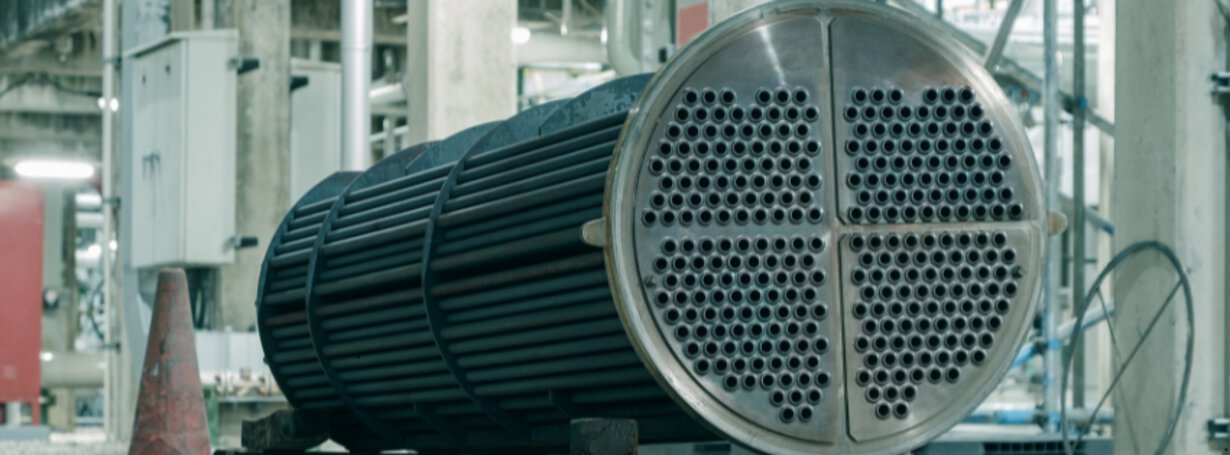

How to control the temperature of a heat exchanger with a PID controller? A case study with a renewable fuel manufacturer
How do you avoid overheating, excessive energy consumption and instability in the heat transfer process? In this case study, we show how a biomass renewable fuel manufacturer optimized its heating system to heat the medium more efficiently with advanced PID control and precise temperature sensors. You'll learn what challenges the client faced, why standard solutions proved insufficient, and the specific benefits of implementing a state-of-the-art measurement and control system. Keep reading to see how you can improve the performance of your heat exchanger!
How does heat transfer work in heat exchangers and why does it require precise temperature control?
Heat exchangers are an integral part of many industrial processes - from energy production to the chemical industry to HVAC systems. Their function is to efficiently transfer heat between fluids, such as water and gas, without directly mixing them. This process occurs through a heat exchanger, which allows the exchange of thermal energy between different media.
In order for the system to operate efficiently, the temperature must be strictly controlled, as even small fluctuations can lead to energy losses, product quality problems or excessive load on the system. Therefore, it is important to use precise temperature sensors and intelligent control, such as the PID algorithm, which regulates heating and cooling parameters in real time, allows optimizing energy consumption to avoid losses and ensures system stability.
How to avoid energy losses in heat exchangers? Customer challenge
A producer of renewable biomass fuel needed a reliable system to control the temperature in water-to-water and water-to-gas heat exchangers. The stability of the process was crucial - even small fluctuations could lead to energy losses, energy consumption to maintain optimal parameters, and reduced production efficiency. Integrating the sensors with the controller in a way that ensured precise and reliable operation of the entire system was also an important aspect. Without effective control, there was a risk of excessive heat transfer, which could negatively affect the entire production process.
What PID control allowed for optimal energy use in heat exchangers? Our solution
The implemented solution was based on the diraTRON PID controller which was responsible for precise temperature control in the heat exchange system. In addition, two temperature sensors were placed at strategic points in the system. The first monitored the temperature of the medium before entering the heat exchanger, which allowed the heating parameters to be adjusted to current conditions. The second sensor measured the water temperature at the exit of the system, controlling the efficiency of the entire process and preventing overheating.
Thanks to the PID algorithm, the controller analyzed the sensor data in real time and regulated the operation of pumps and valves controlling the flow of the medium. The use of a digital input also allowed the system to be switched on and off externally, which provided flexibility in control. In addition, the implemented solution allowed the recording of the most important process parameters, which facilitated the monitoring of performance and quick response to any deviations and maintenance of the appropriate temperature throughout the system.

Compact PID temperature controller for panel mounting JUMO diraTRON (702110)
How has precise temperature control of heat exchangers reduced energy costs and increased efficiency? Customer benefits
The implementation of a new heat exchanger temperature controller allowed the client to significantly improve the efficiency of the heating process. Thanks to the precise PID algorithm, the temperature in the heat exchangers was kept at the optimal level, eliminating the risk of overheating or heat transfer efficiency being too low. Stable control allowed to reduce energy consumption, which directly translated into lower operating costs. In addition, the integration of temperature sensors and a controller from a single supplier simplified system configuration and streamlined operation. The customer gained not only better process control, but also greater reliability and the ability to easily expand the system in the future.
Looking for flow and temperature measurement solutions for heat exchangers? Contact us!
About the author
My name is Ewelina Szmit and I have been working in content marketing for several years, combining my professional skills with my passion for writing. I am convinced that even the most technical topics can be presented in an interesting and accessible way for everyone. Outside of work, I unleash my creativity by creating newspaper collages. I like to spend my free time being active, walking my dog or running.
Comments
We encourage you to leave your comments via the form below. They will be posted online once they have been approved through our review process.


